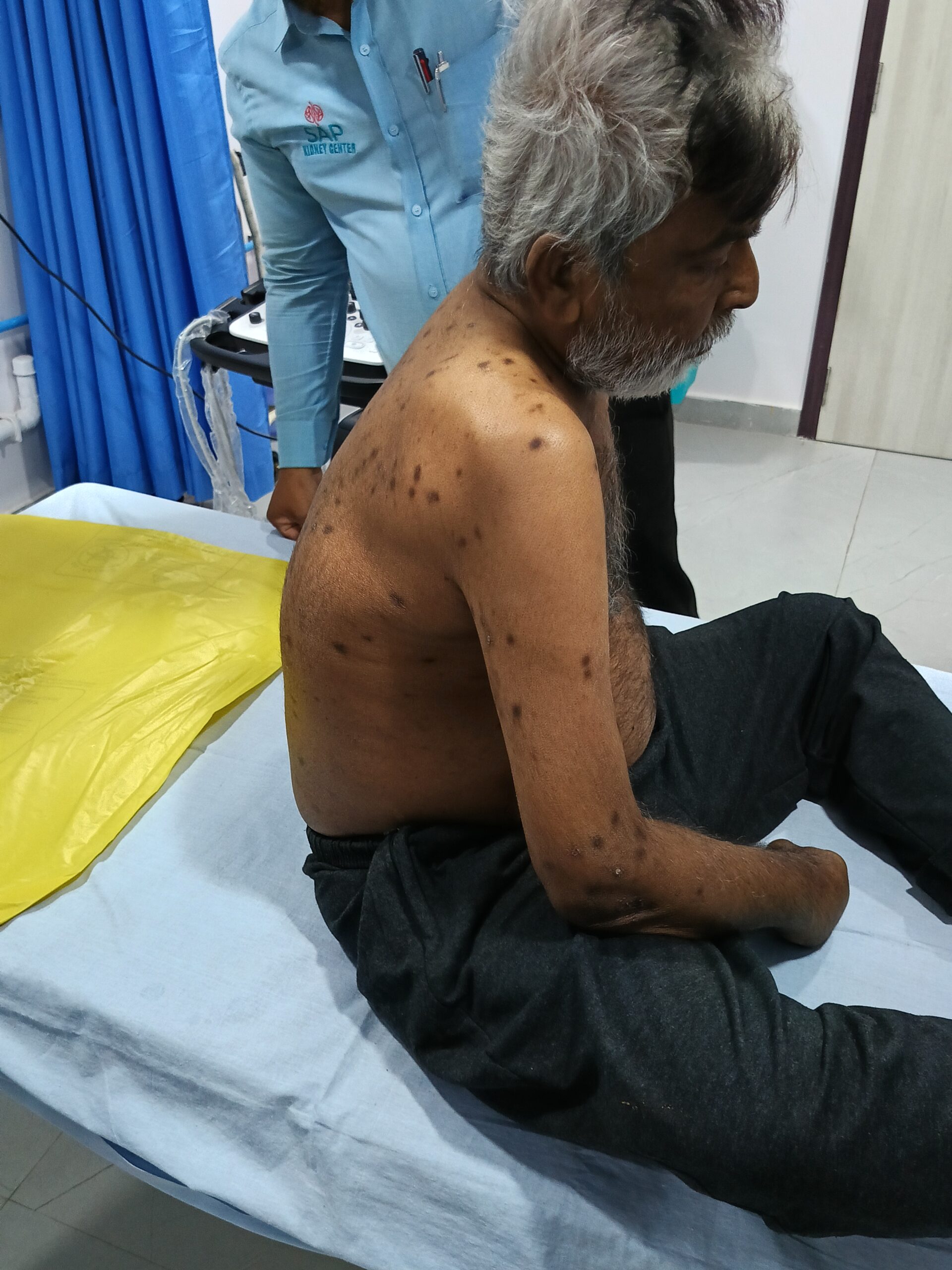relation between Skin and kidney
skin one the biggest parts of body

many kinds of disease related with kidney
Skin informed to by the symptoms your kidney not well means your skin one the showing yours kidney problems.
example
1st . Regular skin irritating
2nd. redness on skin
3rd:Allergic reaction long Time’
4th:skin infection
5th:regular itching or redness

Extremely dry skin : Skin can become so dry that it:
Becomes rough and scalyFeels tight and cracks easilyDevelops fish-like scalesExtremely dry skin is common in people who have end-stage kidney disease, which requires dialysis or a kidney transplant.
Itchy skin. Extremely itchy skin is a common symptom of advanced kidney disease. The itch can range from irritating to life-disrupting. Your skin may itch all (or most of) the time
Some people have itch on one area of their skin. The itch can also spread across most of your body.
Scratch marks and other signs of scratching. When you scratch often, it affects your skin.
You can develop: Raw, bleeding skin or soresThick, leathery skin (lichen simplex chronicus) Firm, very itchy bumps (nodularis prurigo)If nothing seems to relieve the itch, you may want to see a dermatologist.
Some people who have end-stage kidney disease get relief from a treatment called UVB phototherapy.
Color changes to your skin. When the kidneys stop working as they should, toxins build up in your body. This
An unhealthy pale colorGray hueYellowish colorAreas of darkened skin, as shown hereYellowish
symptoms of skin with kidney skin and kidney relationCysts and spots that look like whiteheadsThe last two develop when you’ve had itchy skin for a long time and scratch often.Nail changes. Kidney disease can affect the appearance of your fingernails, toenails, or both. People who have advanced kidney disease can develop:
white color on the upper part of one or more nails and a normal to reddish brown color below, as shown here (half-and-half nails)Pale nailsWhite bands running across one or more nails (Muehrcke’s nails)Because your nails reveal a lot about your health, see your doctor if you notice any changes to your fingernails or toenails.Swelling. Your kidneys remove extra fluids and salt from your body. When they can no longer do this, the fluids and salt build up in your body. This build-up causes swelling, which you may notice in your:
Legs
Ankles
feet
Hands
face
You may see the swelling in one or several areas of your body.
Hands (as shown here)FaceFeetThe blisters will open, dry up, and crust over. As they clear, scars appear.Lump in your belly. This can be a sign of kidney cancer. In its early stages, kidney cancer seldom causes symptoms. When the cancer advances, it can cause a mass or lump on the:
Side
Nelly
Lower backFeeling a mass in one of these areas can also be a sign of something less serious going on inside your body
make an appointment to see your doctor.
Skin too tight to pinch. This is an extremely rare side effect that can occur when you get an MRI or another test that requires a contrasting agent. A doctor may request a contrast agent to get a better view inside an area of your body, such as a blood vessel. If you need a contrasting agent,
it will be injected into a vein before your test.
Gadolinium is a contrasting agent that can affect your kidneys. When this happens, it can cause:
Areas of hard, shiny skin that become too tight to pinch
Inability to fully bend a knee, elbow
, or other part of your bodySkin that feels bound downThis is a rare side effect.
If you have kidney disease, be sure to tell any doctor who orders a medical test for you.Calcium deposit under the skin. Your kidneys have several jobs.
One is to balance certain minerals in your blood,
such as sodium and phosphate. When the kidneys cannot maintain a healthy balance, levels can rise. Some people develop deposits of calcium in their skin, such as the patient in this picture
this patient also has half-and-half nails, which is another sign of kidney disease
Calcium deposits usually develop around a joint and are not painful. However, when they occur within a fingertip, they can cause a great deal of pain.
If one of these deposits pushes up through the skin, you may see a chalky discharge.
How to find kidney disease before it affects your skinThe most common form of kidney disease is chronic kidney disease (CKD). It develops when kidneys become permanently damaged. About 37 million people are estimated to have CKD, and most don’t know they have it, according to the Centers for Disease Control (CDC).1
You can find kidney disease in an earlier stage (before permanent damage occurs) by seeing your primary care doctor. Blood and urine tests can tell your doctor how well your kidneys are working.
These tests are extremely important if you have:
Diabet
high blood pressure
Anyone who is 65 years of age or older should also be screened for kidney disease.
more updates on next page.
lifeofway.com
skin disease related
kidney skin
kidney disease
how to find Skin to kidney problems
how to find kidney disease
kidney skin rash
.


